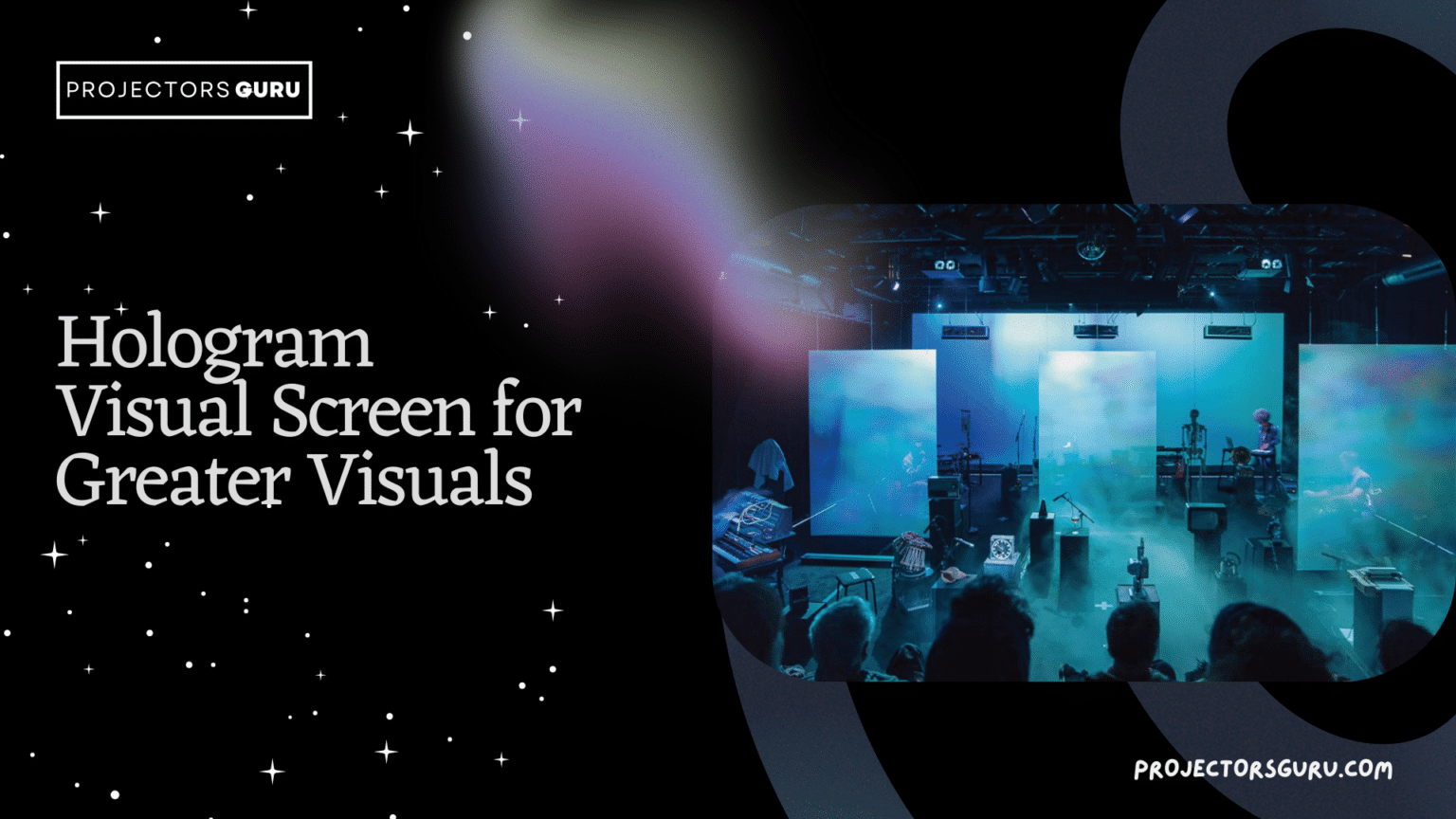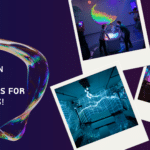Do you want to make your projector visuals more stunning? We have got the perfect idea for you; select the most amazing hologram projection screen. Realistic 3D images that seem to float in space are produced using a holographic screen, also known as a hologram projection screen. This screen, which is made of a translucent or transparent film, permits projection of images while maintaining transparency. It is perfect for use in corporate presentations, education, entertainment, and advertising because of its fascinating display, which offers an interesting method of presenting information. Let’s closely observe what a hologram screen is.
How Do Hologram Projection Screens Work?
Before we install a hologram projection screen, we must know what exactly this screen is. Hologram projection screens are perfect for applications like stores and presentations because they use transparent and translucent surfaces to produce vibrant, 3D-like graphics. These screens provide clear, high-contrast images even in ambient light thanks to a holographic projection screen layer that disperses light from projectors. For an immersive viewing experience, the overhead projector can be positioned behind the screen thanks to the support for rear projection found in many models.
- See-through and translucent screens provide a clear view from multiple angles.
- Designed for ambient light to maintain image clarity and color.
- Wide viewing angles ensure that images remain visible from various perspectives.
Dynamic, realistic holographic displays are made possible by this technology and can be used in events, trade exhibitions, and storefronts.
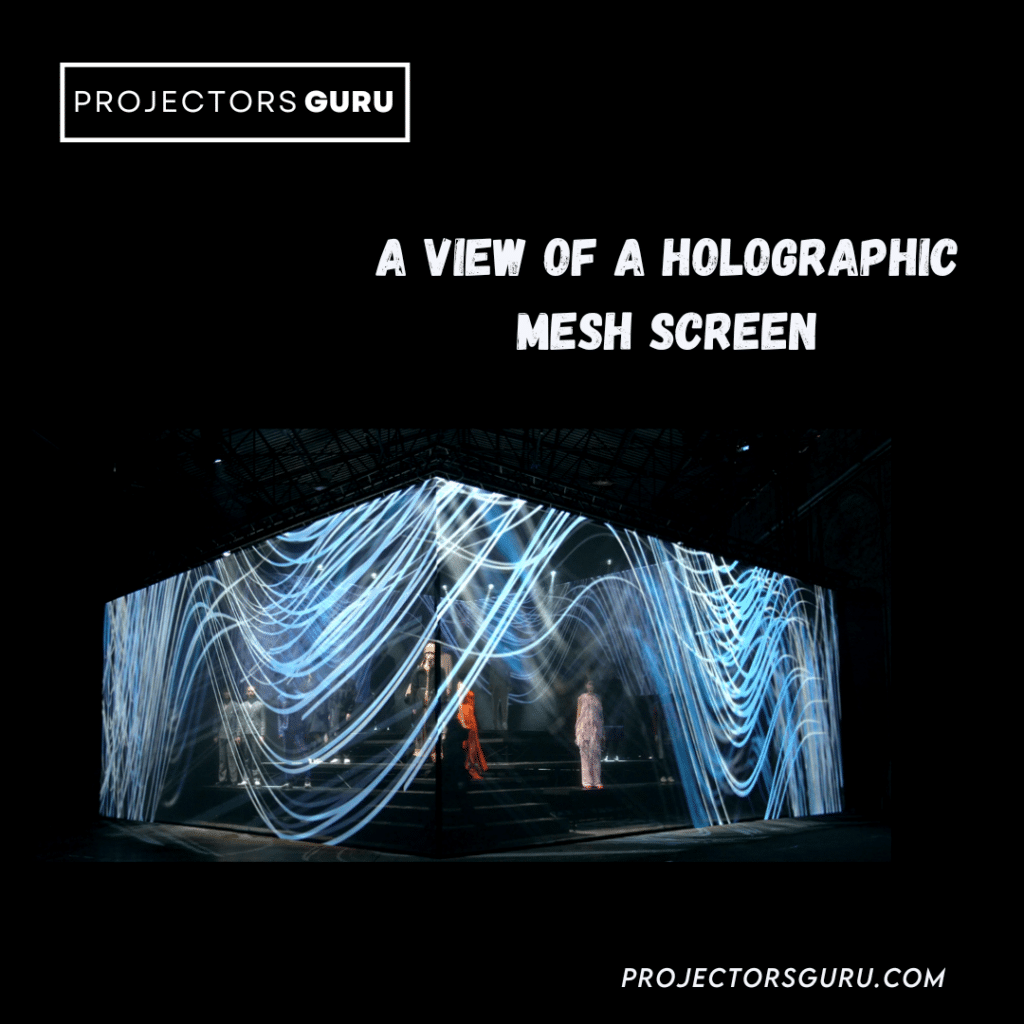
Types of Hologram Projection Screens
There are different types of hologram projection screens, each serving unique purposes and offering specific features;
- Translucent Projection Screen: Often used for creating semi-transparent effects, this screen type balances clarity with privacy. Thus, making it ideal for shops windows and retail displays.
- Invisible Projector Screen: These screens are ultra-clear and can remain almost invisible until a projector illuminates them. This is often in high-end advertising and presentations.
- Rear Projection Screen: Rear projection allows the projector to be in position behind the screen, keeping the viewer’s field of view unobstructed and enhancing the “floating” effect of the hologram.
Pros of Using Hologram Screens
Hologram projection screens offer a range of benefits, making them a popular choice in diverse industries;
- Engaging Displays: The three-dimensional effect draws attention, which is valuable in settings like retail, museums, and exhibitions.
- Enhanced Visuals: With features like high contrast and wide viewing angles, these screens ensure that images remain clear and engaging from different perspectives.
- Flexible Applications: These screens are highly versatile and you can use them with transparent surfaces, making them ideal for shops windows and other glass-based installations.
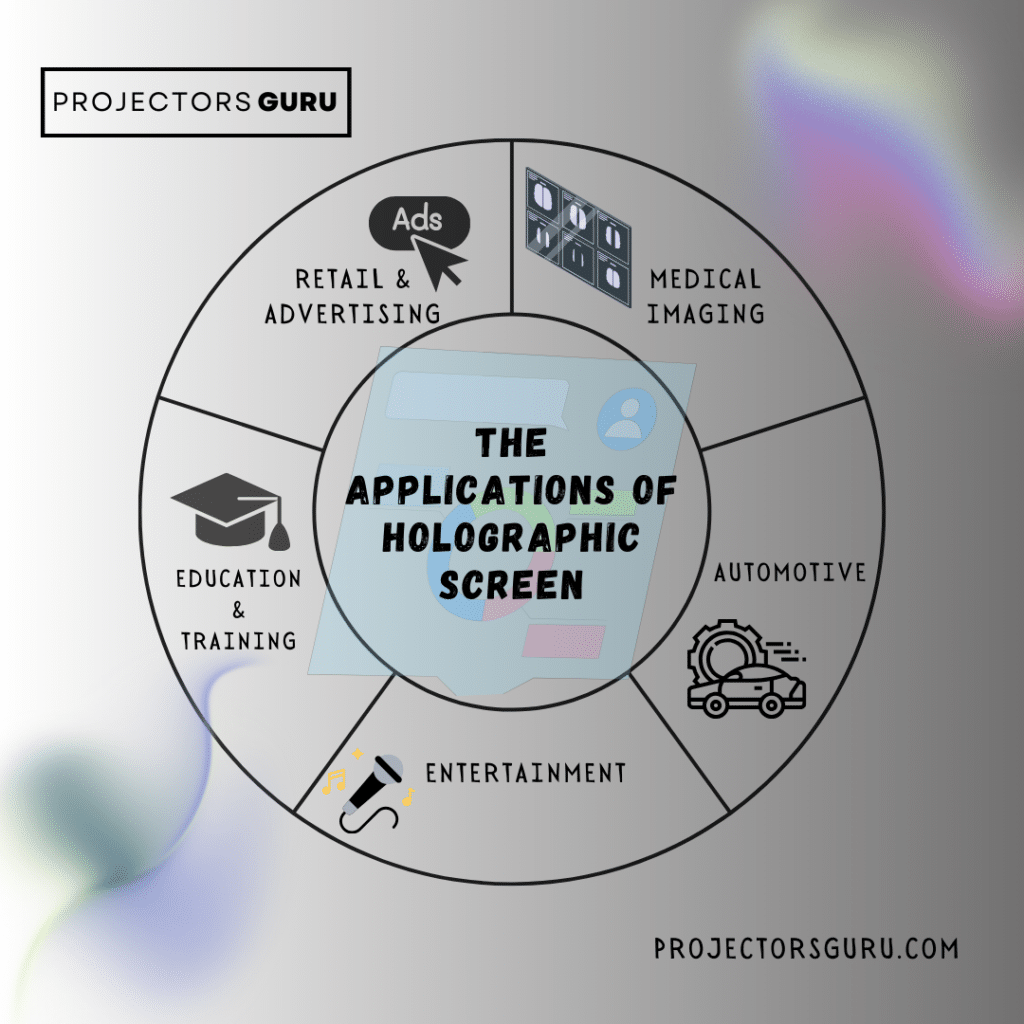
Applications of Hologram Projection Screens
Hologram projection screens have numerous applications across industries due to their flexibility and eye-catching visuals;
- Retail and Advertising: Transparent screens can be integrated into store windows, enabling holographic projections that attract and engage potential customers.
- Education and Training: The see-through and translucent screen for projector setups are excellent for interactive learning. Plus, the allow students to see instructors or displays while images are projected.
- Corporate and Conferences: These screens offer a professional way to display presentations, especially when coupled with rear projection screens for an immersive experience.
Choosing the Right Screen
When selecting a hologram projection screen, several factors should be considered to ensure you get the best results;
- Screen Type: Decide between transparent, translucent, or invisible screens based on your environment and display needs.
- Projection Type: Rear projection may be ideal for situations where the video projector should remain out of sight, while front projection could be useful in controlled light environments.
- Environment: Consider the ambient light and space. Hologram projection screens are highly adaptable to ambient light, but certain types like high contrast screens might perform better in specific settings. Also, make sure of the screen burn in before you turn on your display.
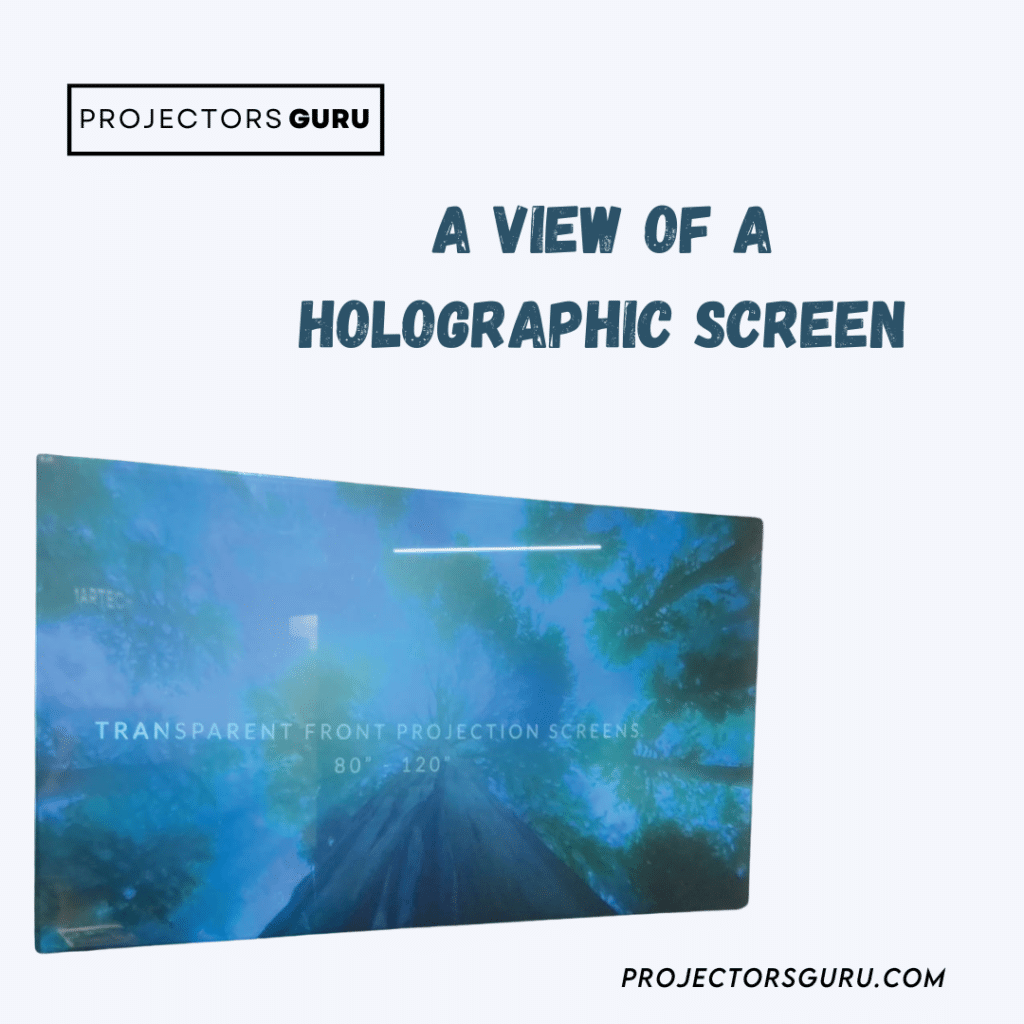
Final Thoughts
Summing up, for presentations, events, and retail settings, holographic projection screens provide an eye-catching, transparent display choice. They provide immersive, high-contrast images even in ambient light thanks to screen kinds including translucent and transparent. Selecting the appropriate screen, like a back projection or holographic screen, improves image quality and audience participation.
In conclusion, these panels, which combine functionality and eye-catching appeal, continue to improve visual experiences as holographic projection technology develops.
SET UP FIERY 3D VISUALS AT HOME!


